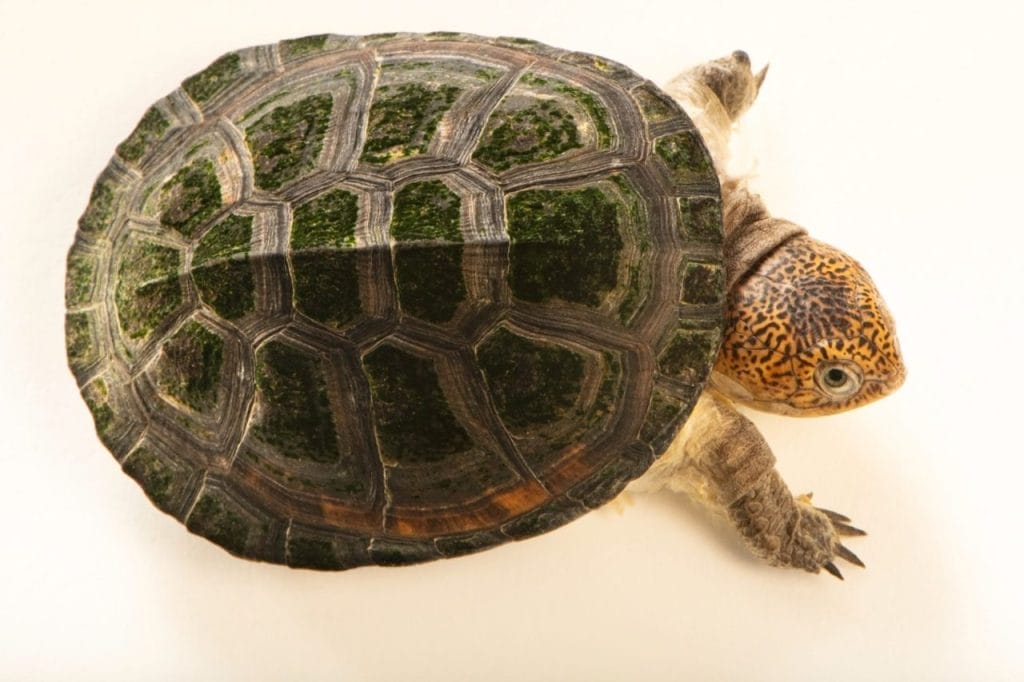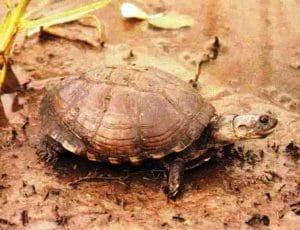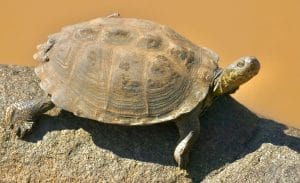Pelusios upembae (Upemba Mud Turtle)
Home > Turtle Database > Pelusios upembae (Upemba Mud Turtle)

Pelusios upembae, known as the Upemba Mud Turtle, is a rare freshwater turtle found only in a small region of Africa. It belongs to the family Pelomedusidae and is not well-studied due to its limited range and low population data.
Native To These Regions
Democratic Republic of the CongoNative Turtle Species Map – Find Turtles by Region
Scientific Classification
Kingdom: Animalia
Phylum: Chordata
Class: Reptilia
Order: Testudines
Family: Pelomedusidae
Genus: Pelusios
Species: P. upembae
Common Names
Upemba Mud Turtle
This Hilarious Turtle Book Might Know Your Pet Better Than You Do
Let’s be real—most turtle care guides feel like reading a textbook written by a sleep-deprived zookeeper.
This one’s not that.
Told from the snarky point of view of a grumpy, judgmental turtle, 21 Turtle Truths You’ll Never Read in a Care Guide is packed with sarcasm, sass, and surprisingly useful insights.
And hey—you don’t have to commit to the whole thing just yet.
Grab 2 free truths from the ebook and get a taste of what your turtle really thinks about your setup, your food choices, and that weird plastic palm tree.
It’s funny, it’s honest, and if you’ve ever owned a turtle who glares at you like you’re the problem—you’ll feel seen.
Identification
Description
This species has a domed, oval-shaped carapace that’s usually brown to dark olive. Its plastron is hinged, allowing it to partially close its shell. Like other Pelusios species, it has a flat head and webbed feet suited for aquatic life.
Sexual Dimorphism
Males tend to have longer, thicker tails and slightly smaller bodies than females. Females are generally broader and heavier, especially when carrying eggs.
Check more turtles from the Pelusios genus
Native Origin and Distribution
Geographical Range
The Upemba Mud Turtle is only known from the Upemba National Park in the Democratic Republic of the Congo. Its exact distribution is still unclear due to limited field studies.
Preferred Habitat
It lives in slow-moving or still freshwater habitats like swamps, marshes, and shallow ponds. These areas usually have muddy bottoms and dense aquatic vegetation, offering both food and shelter.
Behavior
Feeding Habits
It is likely omnivorous, feeding on aquatic invertebrates, insects, small fish, and plant matter. It forages mostly in the water.
Predators
Natural predators include birds of prey, large fish, and some mammals. Hatchlings are especially vulnerable to predation.
Reproduction
Breeding Season
Exact timing is unknown, but breeding likely follows seasonal rainfall like many other African freshwater turtles.
Reproductive Method
Females lay eggs in shallow nests dug in soft soil near water. Clutch size is unknown, and hatchling behavior has not been studied.
Conservation
Extinction Status
Listed as Data Deficient by the IUCN due to the lack of information on its population and threats.
Threats
Main threats include habitat destruction from agriculture, mining, and pollution. The species’ limited range makes it highly vulnerable.
Conservation Measures
Upemba National Park offers some protection, but more research and habitat monitoring are urgently needed.
Economic Importance
There is no known economic use for this turtle, and it is not part of the pet trade or local consumption markets due to its rarity.
Interesting Facts
Pelusios upembae is one of the least studied turtles in Africa.
It belongs to a group of side-necked turtles that bend their neck sideways to tuck into their shells instead of pulling straight back.

About Author
Muntaseer Rahman started keeping pet turtles back in 2013. He also owns the largest Turtle & Tortoise Facebook community in Bangladesh. These days he is mostly active on Facebook.














